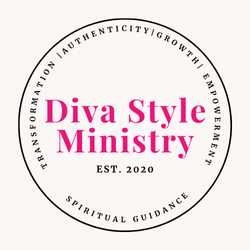You’ve probably heard someone mention a favorite mantra—a simple phrase they repeat to stay grounded or focused – but mantras are more than inspirational sayings. They’re ancient tools with profound spiritual and emotional impact, offering a pathway to inner peace, strength, and clarity.
You might be more familiar with affirmations, which we often discuss on this site, and be curious about the difference between an affirmation and a mantra. Let’s explore that further below…
Affirmations and Mantras: Similar Tools, Distinct Purposes
At first glance, affirmations and mantras may seem similar—they’re both short, intentional phrases you repeat with purpose. But their roots and how they support your journey can differ in meaningful ways.
Affirmations are positive, present-tense statements you speak to yourself to reshape your thoughts, beliefs, and behaviors. They support mindset shifts by helping you claim what’s true or what you are growing into. For example, “I am enough,” or “I am worthy of love.” Affirmations are a cornerstone of self-development, used to build confidence, challenge inner criticism, and align with your values.
Mantras, on the other hand, are often spiritually grounded phrases or sacred sounds—like the ancient Sanskrit “Om”—used in meditation to quiet the mind and connect with your deeper self or the divine. Mantras aren’t necessarily about changing your beliefs; they’re about presence, stillness, and spiritual attunement. They invite you into a rhythm that calms your nervous system and opens the door to inner clarity.
Both affirmations and mantras are powerful. One helps you become more of who you are becoming; the other helps you return to who you already are. You don’t have to choose one over the other—instead, you can allow them to complement each other as part of your personal spiritual practice.
Rooted in Hindu and Buddhist traditions, mantras are sacred sounds or phrases used to connect the mind and body during meditation. For thousands of years, people have turned to mantras to access a deeper state of consciousness, invite healing energy, and cultivate awareness. Whether spoken aloud, whispered softly, or repeated silently in your mind, a mantra can help quiet the noise of the outside world and bring your spirit into alignment.
And you don’t need to follow a specific tradition to experience their power—mantras are for everyone. They can be spiritual or secular, ancient or personal, and when used intentionally, they can support your well-being in extraordinary ways.
Why Use Mantras in Meditation?
In our everyday lives, it’s easy for our minds and bodies to fall out of sync. We rush through tasks while worrying about the future or reliving the past. This misalignment can lead to overwhelm, distraction, and emotional fatigue. Mantras offer a way to return to the present moment.
A mantra is like an anchor for your attention. It gives your mind something to focus on—a rhythm to follow. As you breathe deeply and repeat your chosen mantra, your thoughts begin to slow. Your nervous system calms. Your energy softens. And suddenly, there’s space: for insight, for healing, for peace.
One of the most well-known mantras is “Om,” believed to be the primordial sound of the universe in Hinduism. It symbolizes divine creation, balance, and sacred connection. When repeated with intention, “Om” isn’t just a sound—it becomes a bridge between the physical and spiritual, inviting your entire being to come into harmony.
But you don’t have to use ancient Sanskrit to benefit from mantras. You can use any phrase that feels empowering, healing, or calming to you. The key is repetition, intention, and presence.
How to Choose a Mantra That Resonates with You
There’s no one-size-fits-all when it comes to choosing a mantra. Your meditation practice is deeply personal—and your mantra should reflect that. Think of your mantra as a soul whisper, something that speaks to where you are and what your heart most needs.
Ask yourself:
- Does this word or phrase bring me peace or clarity?
- Do I feel empowered or uplifted when I repeat it?
- Is it easy to remember and soothing to say?
You can explore traditional mantras, create your own, or use a blend of both. Some people keep one steady mantra over time, while others rotate based on their emotional or spiritual needs.
Examples of Personal Mantras to Try
Here are a few mantra ideas you can experiment with:
- I am a being of light and love.
- I am worthy of joy and abundance.
- Peace begins with me.
- I choose calm. I choose grace.
- I trust the wisdom within me.
- I am safe, I am whole, I am healing.
- My life flows with ease and purpose.
- I release what no longer serves me.
If you’re navigating something specific—grief, transition, relationship tension—you can create mantras that speak directly to your situation. For example:
- “This moment is temporary. I am grounded in love.”
- “My partnership is a space of mutual growth and respect.”
- “I am learning to trust the unfolding of my life.”
Let Your Mantra Grow and Change With You
One of the most beautiful aspects of using mantras is their flexibility. You can change them daily, seasonally, or as life evolves. Some days you may crave stillness, and on other days you may need courage. Your mantra can adjust to reflect that.
Let it be a conversation with your soul—a sacred space where healing, affirmation, and empowerment meet. Whether you’re using it to deepen your meditation practice or simply to redirect your energy on a challenging day, your mantra is your reminder: you have the power to choose peace, presence, and purpose.
[convertkit form=7953426]
Related Reads:
Elevate Your Mindset & Confidence
Keep going! These insightful reads will help deepen self-awareness, build confidence,
and inspire you as you progress toward your best, most authentic self.





